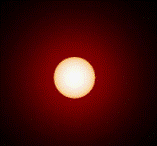Department of Physics and Astronomy: Publications and Other Research

Norman R. Simon Papers
Document Type
Article
Date of this Version
3-1970
Citation
Astrophysical Journal (March 1970) 159
Abstract
The effects of thermal imbalance (dS1/dt ≠ 0) on stellar pulsational stability have largely been ignored in the literature. Here we have used the linear, quasi-adiabatic pulsation theory to make a preliminary investigation of such effects. Analyses of the standard model and of a white dwarf show that, for these cases, "ordinary" terms in the stability integrals greatly outweigh the "extra" terms considered here. The latter become more important when substantial ionization zones exist in the stellar matter. It is argued that the influence of thermal imbalance on pulsational stability should be quite small for stars crossing the H-R diagram in early post-main-sequence evolution, and for cooling degenerate stars. On the other hand, during pre-main-sequence contraction the thermal-imbalance terms are more likely to be important, and for thermal runaways in shell-burning stars these terms are almost certainly crucial.


Comments
Copyright 1970, University of Chicago. Used by permission